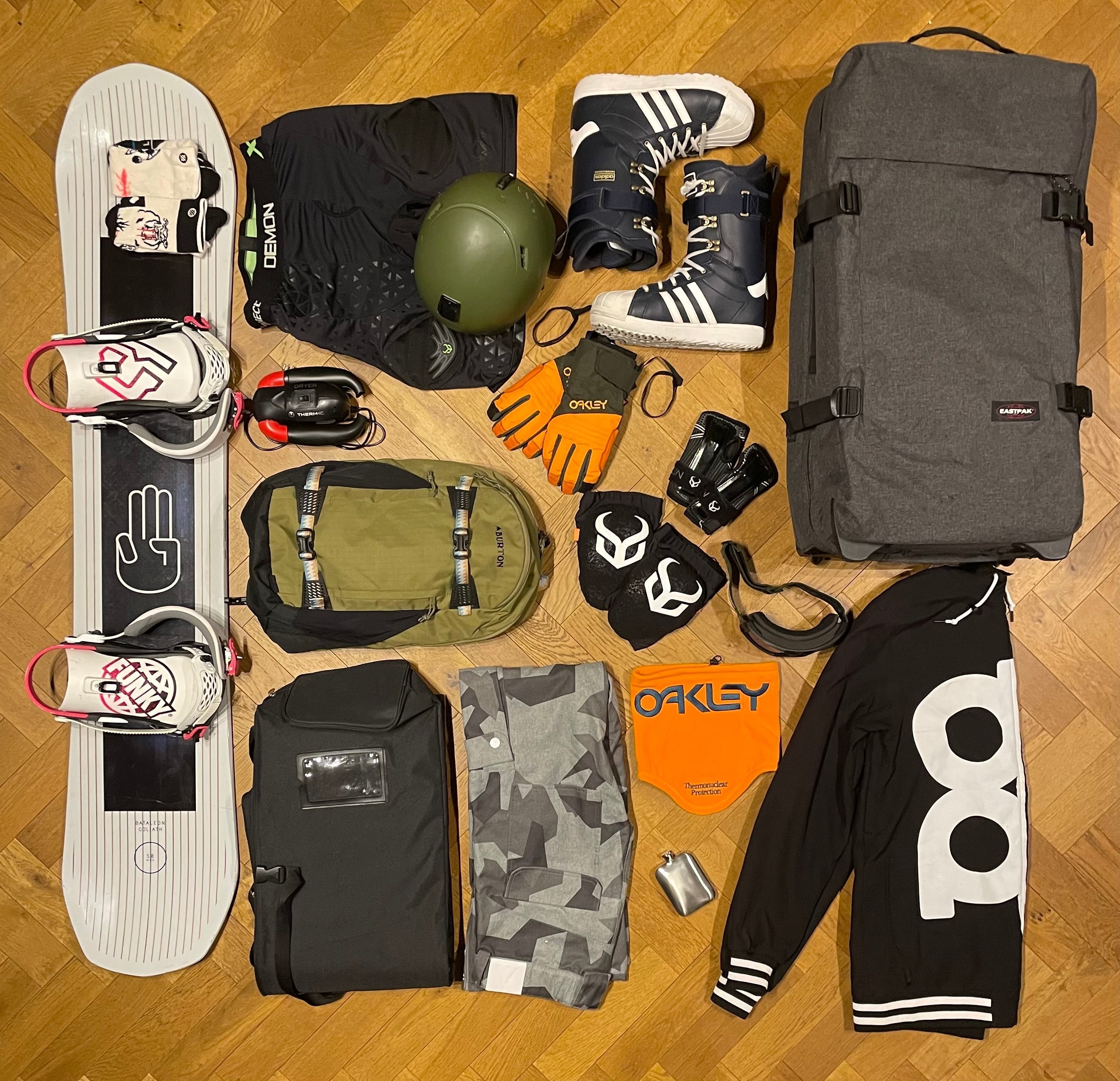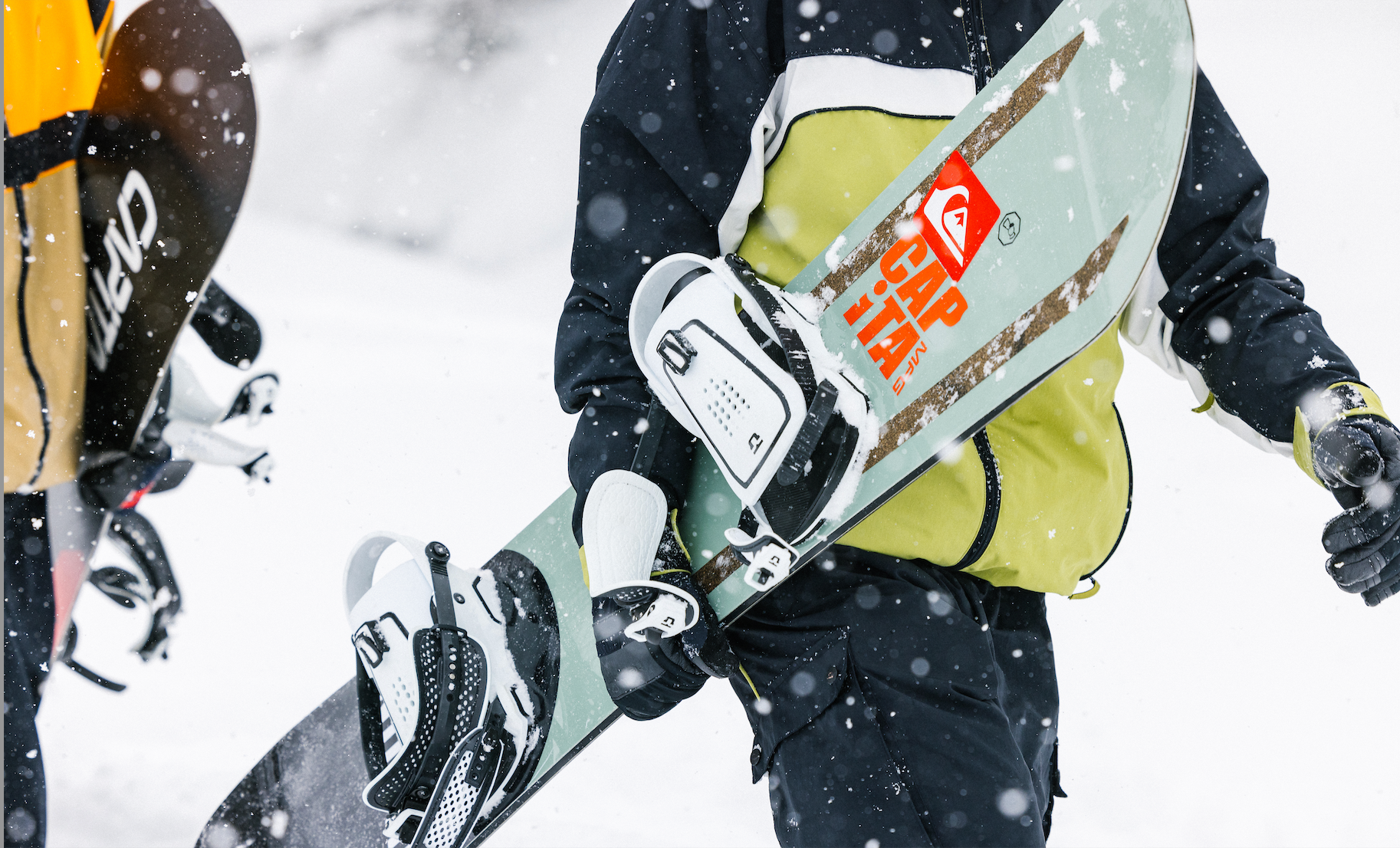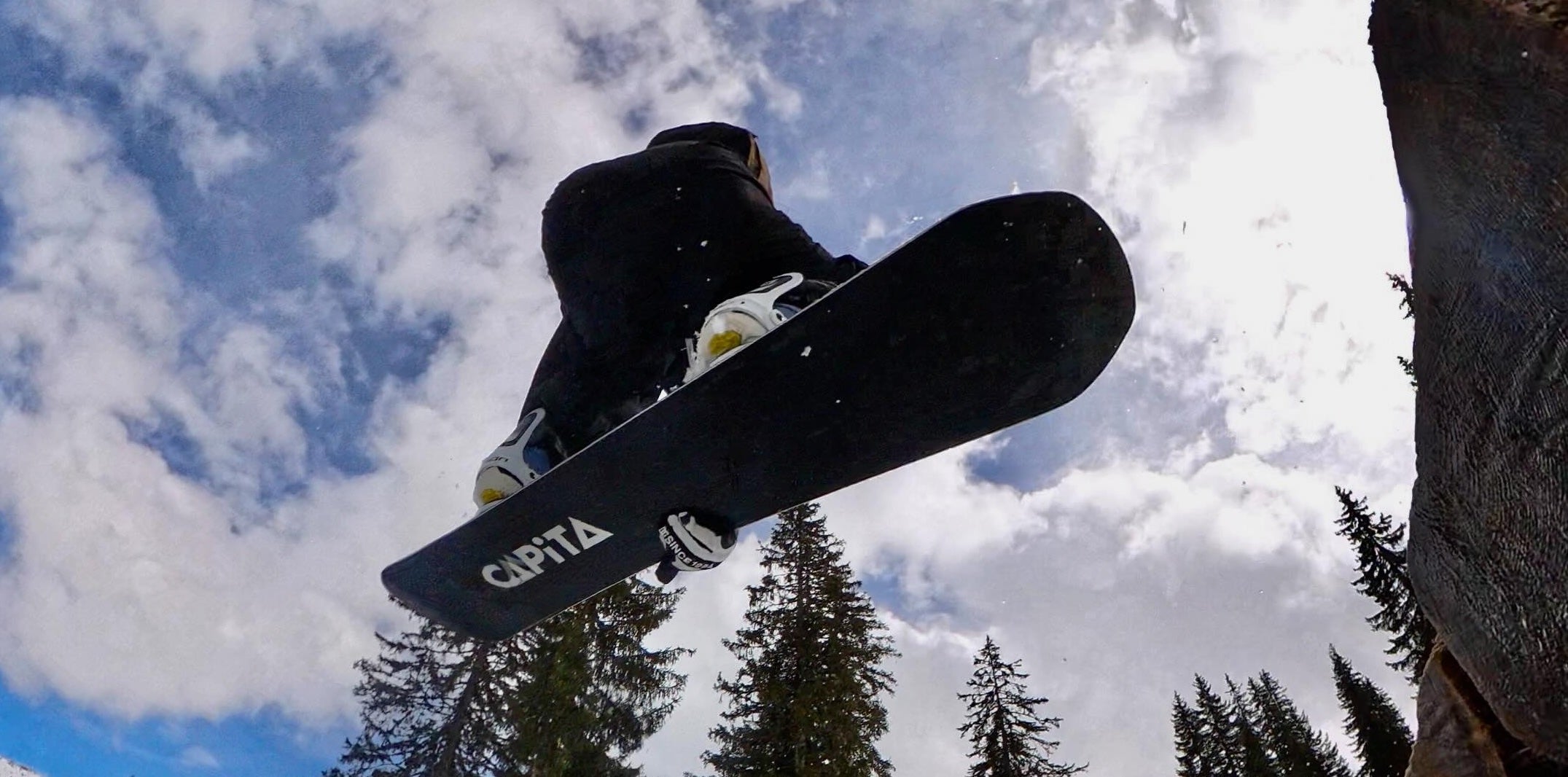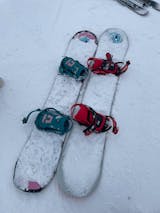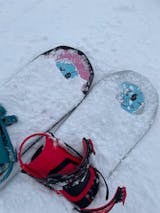Snowboard bindings are such a crucial part of your setup, as they connect you to the board and play a significant role in your performance and comfort on the slopes. If you buy your perfect snowboard then stick some unsuitable bindings on there, you have wasted your money twice. To help you make the best choice, here's a buying guide for your first pair of snowboard bindings:
First up, lets take a look at a snowboard binding and see what all the bits are, for a more in-depth look at all of the individual components of a snowboard binding, click here.
 Flex Rating: Compatibility: Ensure the bindings are compatible with your snowboard and boot. Most modern bindings are designed to fit standard 2x4 and 4x4 insert patterns. Another system is the channel one, this is rarer and you can see the difference between the two below from Bataleon and Endeavour.
Flex Rating: Compatibility: Ensure the bindings are compatible with your snowboard and boot. Most modern bindings are designed to fit standard 2x4 and 4x4 insert patterns. Another system is the channel one, this is rarer and you can see the difference between the two below from Bataleon and Endeavour.

Additionally, check if the bindings are compatible with your boot size. Most bindings are adjustable to accommodate various boot sizes but this only gives you so much adjustment.
Binding Size: Select the appropriate binding size based on your boot size. Refer to the manufacturer's size chart to find the right fit. Avoid binding overhang, as it may cause drag or interfere with your riding. Here's a handy size chart from our friends at Union Bindings.

Comfort and Fit: Try on the bindings with your snowboard boots to ensure a snug and comfortable fit. Look for flexible straps and ample cushioning to reduce pressure points and enhance comfort.
Strap System: Look for bindings with user-friendly and reliable strap systems. Traditional 2-strap systems (ankle and toe straps) provide good support and customisation. Some bindings also offer hybrid or one-piece straps for added convenience.
Highback Style: The highback is the part of the binding that supports your calves and provides control. Opt for a highback style that complements your riding style. Freestyle riders may prefer a shorter and softer highback for increased mobility, while freeriders may opt for a taller and stiffer highback for better response.
Ratchets and Buckles: Check the quality of the ratchets and buckles, as they affect how easy it is to get in and out of the bindings. Smooth and durable ratchets ensure quick and hassle-free adjustments on the mountain. Nobody wants a strap that starts to come loose halfway down a run.
Brand Reputation: Choose bindings from reputable brands known for their quality and durability. Research customer reviews and seek recommendations from experienced snowboarders.
Budget: Set a budget for your bindings, considering that they are an important investment in your snowboarding gear. While it's essential to find a good deal, prioritize quality and performance over price.


